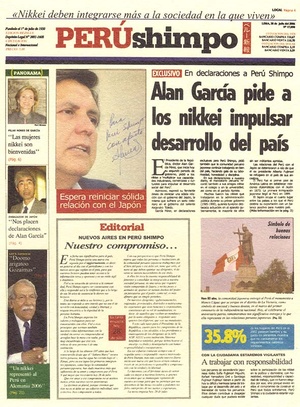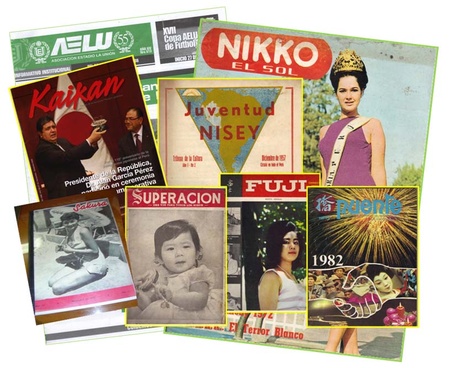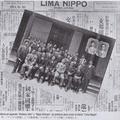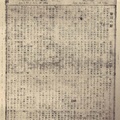Read Part 2 >>>
For almost a decade there were no Japanese-language newspapers circulating in Peru until July 1st 1950, when Peru Shimpo (Recent News from Peru) appeared, which remains in circulation today, and whose publication was authorized by Ministerial Resolution 107 of July 1st 1948. Peru Shimpo, just like Andes Jiho in 1913, was a product of donations gathered from among the members of the Japanese community. The organization for fundraising, as well as the donations lasted two years. With the proceeds the editors purchased machinery and the necessary typography, both of which arrived in Peru in February of 1950.
Diro Hasegawa was elected president of the board of directors, Masao Sawada as manager and Hiromu Sakuray as administrator and translator. The head of workshop was Kaname Ito, while some of the writers were Junji Kimura, Giei Higa, and Chihito Saito. Saito was also in charge of the Spanish section of the newspaper.
After a year in circulation, Peru Shimpo Press acquired office space in Lima downtown. At the end of the 1990s, the Japanese philanthropist, Ryoichi Jinnai, donated to the press a second-hand offset machine that remains in use today. At the start of the new century, the press relocated to Bellavista, Callao.
The publication was printed in the standard format and had four pages. In the beginning moveable type characterized the process. Later, the publication increased to eight pages. In 2006 a new design system was introduced along with color pages and in 2010 Peru Shimpo became a tabloid.

En el 2006, Perú Shimpo modernizó su diseño e introdujo el color en sus páginas. El Presidente del Perú, Alan García, envió un saludo a los nikkei a través de este diario.
On October 1 1955, which is to say, five years after the start date of Peru Shimpo, a second Japanese newspaper appeared in the post-war era: Peru Asahi Shimbun (Morning in Peru). Ryoko Kiyohiro was in charge of editing the Japanese sections and Víctor Hayashi the Spanish ones. The newspaper circulated until March 1964 when it shut down due to financial problems.
Prensa Nikkei (Nikkei Press) appeared in 1985 and remains as the only Spanish-language tabloid in circulation.
Toward the end of the 1950s and the beginning of the 1960s other periodicals appeared, many of them of great prestige, including Puente, Juventud Nisey, Nikko, and Sakura. These publications also enjoyed a modicum of success, but, unfortunately, they disappeared one by one, fundamentally because of a lack of financing. At present, only the institutional periodicals remain, such as Kaikan, which is the news branch of the Peruvian-Japanese Association and AELU, a branch of the Stadium Association La Unión, among others.
* This article is published under an agreement between the San Marcos Foundation for the Development of Science and Culture at the National University of San Marcos and the Japanese-American National Museum and its Discover Nikkei project.
© 2010 Alejandro Sakuda








